As IVF success rates continue to improve over time, many fertility specialists and couples with fertility issues are considering IVF treatment sooner than in the past.
When considering intrauterine insemination (IUI) vs. IVF, some issues to consider are:
- Who should be treated with in vitro fertilization?
- What about going from IUIs to IVF – how many intrauterine inseminations should be done before moving on to IVF treatment?
- What are the success rates with IUI and IVF?
- What are the advantages of in vitro fertilization over intrauterine insemination, IUI?
In vitro fertilization is generally used in couples who have failed to conceive after at least one year of trying who also have one or more of the following fertility issues:
- Blocked fallopian tubes or pelvic adhesions with distorted pelvic anatomy.
- Severe male factor infertility (low sperm count or low motility).
- Failed 2-3 cycles of ovarian stimulation with intrauterine insemination.
- Advanced female age – over 38 years old.
- Reduced ovarian reserve, which means having a low egg supply. A day 3 FSH, ovarian antral follicle counts and AMH blood levels are often used as screening tests for egg quantity.
- Severe endometriosis.
IVF success rates are improving over time as knowledge and technology advances.
Delivery rates per IVF cycle (per IVF ovarian stimulation cycle started, all ages combined) are shown in the table below – USA national data.
| National averages SART & CDC Data |
|
|---|---|
| Year | Percentage of IVF cycles resulting in a live birth |
| 1985 | 5.3 |
| 1987 | 8.3 |
| 1989 | 11.3 |
| 1991 | 12.9 |
| 1993 | 15.8 |
| 1995 | 18.7 |
| 1997 | 24.0 |
| 1999 | 25.2 |
| 2001 | 27.0 |
| 2003 | 28.3 |
| 2005 | 27.8 |
| 2007 | 29.0 |
| 2009 | 30.0 |
IVF success rates for women under age 35 are much higher than shown above – the numbers shown are for all ages combined
See our IVF success rates and links to the CDC and SART websites that show success rates for all US clinics
As IVF success rates increase and IVF and IUI costs change over time, so does the decision making processes about the most appropriate fertility treatment options. Pregnancy rates for IUI, intrauterine insemination procedures have not increased over time. Therefore, the average number of IUIs done before IVF has decreased significantly over the past 15 years.
Whereas most couples would do 3-6 IUI cycles before IVF treatment in the early 1990’s, today most couples choose to move on to IVF after 2 or 3 failed artificial insemination cycles.
Success rates with IUI vs. IVF can help a couple decide which way they want to go.
A couple with the female partner at age 30 with unexplained infertility that has been trying for 2 years can expect approximately:
- 8% chance per month of getting pregnant with clomiphene and intrauterine insemination for up to 3 cycles (much lower after 3 tries)
- 12% chance per month of conceiving with injectable FSH (e.g. Follistim) and insemination for up to 3 cycles (much lower for more than 3 attempts)
- 55% chance for having a baby after one cycle (month) of IVF treatment at our center – pregnancy success rates vary greatly between IVF clinics
Tests (beyond the basic ones) do not really help us get women pregnant and usually do not help much in deciding the best treatment for a couple. Couples that come to infertility specialist doctors for help want to have a baby, they don’t want to have extended and expensive testing and they often don’t want to wait very long to get pregnant.
Surgery does not result in many pregnancies either. As IVF pregnancy rates continue to increase, surgery becomes a much less viable treatment option by comparison (in the patient’s view).
Costs of fertility treatments for women are an important factor in deciding when to move on to IVF from inseminations for many couples. The cost of fertility treatment as well as the cost of the fertility drugs are sometimes be covered by the female partner’s health insurance plan – but usually are not. That leaves most couples deciding how to best spend their own money on the available fertility treatment options.
Learn more about infertility and IVF insurance coverage
In some IVF programs, such as ours, the cost of IVF is below regional and national averages. Lower IVF treatment costs results in some couples doing IVF sooner than they might have in the past.
Is IVF more “cost-effective” than IUI?
Our patients often say; “Maybe we would get pregnant if we tried more insemination cycles, but we’re tired of this, and it is getting expensive. We just want a treatment with high success rates. We want to do IVF now.”
When evaluating the cost-effectiveness (cost per baby) of infertility treatments, IVF will be for some couples will be the most cost-effective therapy.
So should everyone with fertility problems just do IVF? Of course not. But some couples would benefit from doing IVF sooner rather than having more tests, more surgery and more IUI cycles that are relatively low yield for getting the baby they want. The big advantage of in vitro fertilization is that it has a much higher success rate than any other infertility treatment.
Concerns about high-order multiple pregnancy (triplets and greater) have also caused some couples and physicians to move on from IUI to IVF sooner than in past years. IVF allows the couple to choose how many embryos will be transferred so that they will not end up having 7 like the woman in Iowa, or 8 like the woman in Texas. These women did not do IVF – they had ovarian stimulation with injectable FSH and then either intercourse or insemination.
With ovarian stimulation and insemination, the number of eggs released with ovulation and fertilized inside the female partner’s body is not well controllable. This increases risks for high order multiple pregnancies.
Day 5 embryo, a high quality human blastocyst
Blastocyst transfer is a relatively new IVF culture technique that allows us to maintain high IVF pregnancy rates when only transferring 1 or (usually) 2 embryos to the mother. This results in almost no risk for triplets.
When we transfer 2 embryos, triplets can only occur if both embryos implants and one embryo splits into identical twins. That is rare, although we do see it in about 2% of IVF pregnancies.
So what should you do?
If you do decide to proceed with IVF, make certain that you research the clinic’s success rates before you commit. You should get a copy of the clinic’s recent pregnancy success rates in writing. Also, check out the clinic’s success rates on the CDC website (US government) or the SART website. Links to the CDC and SART sites can be found on our IVF success rates page.











